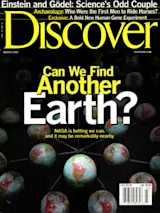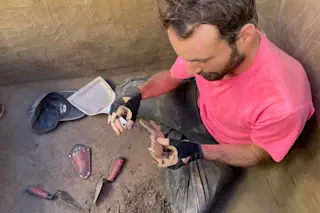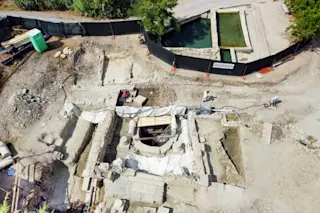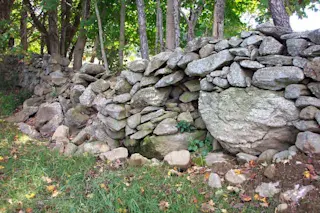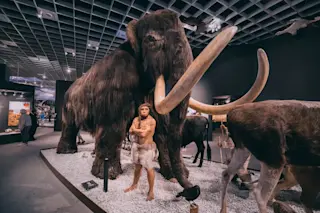Richard Evershed keeps mummy parts in his drawers. Not bandages or bones but tiny glass vials containing specks of brown powder, the sad residue of an ancient embalmer's art. On the vials are curious labels: Female Adult Ptolemaic: "resinous" lump hanging by thread off right ankle, says one. Horemkenesi: leg and foot, says another. Pedeamun: resin from top of head, reads a third. Retrieved from the remains of once-proud Egyptians, these remnants now resemble dried tea leaves. But it isn't clairvoyance that awaits them; instead, it's 21st-century chemical analysis in Evershed's lab at the University of Bristol in England.
Evershed, a gray-haired man with the slightly bemused air of someone unused to sudden fame, is more than willing to show visitors the mummies in the Bristol museum, five minutes' walk up the road from his paper-stacked office. But clearly his heart lies with chemistry, not coffins. "Some people spend hours looking at them," he says of the dusty, dimly lit collection of sarcophagi in the museum. "I'm more interested in the bodies."
Not whole bodies, of course. It was once acceptable to unwrap ancient mummies—sometimes, as in the Victorian era, before crowds of paying spectators. Now such invasions are fiercely frowned upon, which is why Evershed, an organic chemist, follows a less aggressive path. He and his grad student Stephen Buckley have taken tiny samples from 13 mummies in museums all over the United Kingdom and subjected them to the most thorough chemical analyses yet. In the process, they've provided the first detailed inventory of the embalmers' concoctions and overturned long-held assumptions about Egyptian mummification.
Some of those assumptions date back to the time of Herodotus, the Greek historian who traveled to Egypt in the fifth century B.C. Herodotus described an array of balms and unguents—from myrrh and cassia to cedar oil, palm wine, and some sort of gum—applied by embalmers to the eviscerated bodies under their care. But Herodotus' accounts were secondhand; he does not appear to have witnessed mummification in action, and it is unlikely that the notoriously secretive embalmers would have revealed the tricks of their trade to a stranger.
With time, popular notions about mummies only grew more muddled. In the 12th century, returning Crusaders brought news of the healing powers of ground-up mummy parts, and the powder soon became a popular panacea. In the late 18th century, investigators began to take a closer look at the cadavers—unwrapping, dissecting, sniffing, and even chewing them. But such scrutiny was not only of limited scientific value, it destroyed the specimens.
Evershed and Buckley's approach was less invasive and far more revealing. They began by removing minute samples of tissue or wrapping (some less than a tenth of a milligram) from mummies made between 1985 B.C. and A.D. 395, the end of the Roman period. They then analyzed the samples using gas chromatography and mass spectrometry. First, they liquefied the samples and injected them into a glass tube filled with helium, which was heated. They then measured how long each chemical component took to vaporize and emerge from the other end of the tube. The more volatile the compound, the quicker it passed through the column. Finally, the components were channeled into a mass spectrometer, which sorted and identified their gaseous ions based on their behavior in electric and magnetic fields.
The results revealed a witches' brew of fats, resins, perfumes, and waxes, each carefully calibrated to provide the best defense against decay. Indeed, the embalmers apparently honed their skills over thousands of years, testing and experimenting with different potions and preservatives. All the bodies were first treated with a natural salt mixture known as natron. This dried out the tissue until it was tough as an old sausage, but the humidity of a damp tomb could still soften the body, leaving it subject to bacterial decay. So preservatives were applied.
The first of these was the simplest. Every mummy that Evershed and Buckley sampled had been coated in fat, mostly in the form of plant oils, though fat from cattle, sheep, or goats was also used. As the fats dried, the double bonds in their molecules cross-linked to form an intricate lattice that kept out both water and bacteria. "We've looked at a child mummy from Edinburgh—an unwrapped one—and it's completely shiny," Evershed says. "It's almost like it's had a number of coats of varnish." Vegetable oils may also have been used as a cheap base for costly, volatile spices such as myrrh that could mask the nasty odors arising from the recently deceased.
The mummy of Horemkenesi, a 60-year-old foreman for a team of 11th-century-B.C. tomb builders, was dissected in 1981 after his body began to rot. His humble origins were soon revealed: no amulets, recycled linen, and brain devoured by carrion beetle larvae.Photographs courtesy of the Department of Archaeology/City of Bristol Museum and Art Gallery
Next, many of the mummies were coated with conifer resin and beeswax. Coniferous trees aren't native to Egypt, so they must have been imported from across the Middle East: cedars from Lebanon, Aleppo pine from Syria, oriental spruce from southern Turkey. As for the beeswax, like resin it would have repelled water as well as bacteria, and like resin it was used in ever-greater quantities as the centuries passed. "It looks like there was some evolution of the technique," Evershed says. "On the face of it, you've got what looks to be a fairly mundane collection of materials. But if you stand back and look at them, you start to appreciate why they were chosen. Perhaps they were gaining an increasing appreciation of what they were trying to do and were drawing on more materials in order to do it."
Still, when it came to mummification, the embalmer's experience mattered less than the cadaver's money and class. Take two mummies in the Bristol museum, both of which Evershed and Buckley analyzed. One, a female, stands slightly lopsided in a glass case, her body still wrapped in bandages. In happier days—that is, sometime between 945 B.C. and 715 B.C.—she was "the Lady of the House Nes-Khons," according to her sarcophagus, the wealthy daughter of a lord of Thebes. At her death, probably around age 40, embalmers gave her the kid-glove treatment: Plant oils, coniferous resin, balsam, and wax were all applied to her body. Leaving aside the hole at the neck of her casing—drilled apparently by thieves searching for amulets—she remains intact.
Compare this with the fate that awaited Horemkenesi, a middle-ranking foreman and priest at the temple of Karnak in the 11th century B.C. After Horemkenesi's body was unwrapped, his flesh was found to have been bored through by 3,000-year-old beetles. And no wonder. The only preservative the team was able to find—despite sampling his body parts in 15 different places—was oil.
Of Herodotus' recipe, Evershed and Buckley found few ingredients. Some, like palm wine, would have evaporated or disintegrated and left little trace. But the absence of others, such as bitumen, is harder to explain. Bitumen is the agent most closely associated with Egyptian embalming: The word "mummy" has long been thought to come from mumiyah, the Arabic word for bitumen. For centuries many people have believed that some mummies owe their black appearance to a thick coating of the material, which is found floating in blocks on the Dead Sea and seeps from the earth throughout the Middle East. Yet the Bristol team couldn't find a trace of it in their samples.
Small quantities of bitumen may have been used to waterproof some Roman-era mummies, the two chemists concede. But "the idea that bitumen was widely and generally used is just rubbish, quite frankly," Buckley says. "Some mummies are not black; they're only black when they're unwrapped by people," rather as a cut apple browns when exposed to air. Given that beeswax was a primary material used in mummification, Buckley says, the real origin of "mummy" may lie much closer to home: In Egyptian Coptic, the word for wax is mum.


